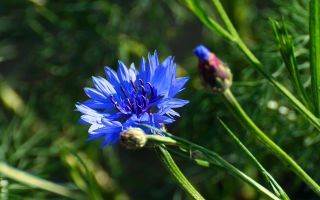Content
- 1 What does a cornflower flower look like?
- 2 Where and when cornflowers grow
- 3 Cornflower species
- 4 The chemical composition of cornflower
- 5 What is useful and what diseases does cornflower treat
- 6 Cooking methods
- 7 The use of cornflower in traditional medicine
- 8 Application in cosmetology
- 9 Cooking applications
- 10 Contraindications
- 11 Collection and procurement
- 12 Conclusion
- 13 Reviews of the flower cornflower
The medicinal properties of the cornflower herb are quite widespread in pharmacology. The plant effectively copes with diseases of the urinary and digestive systems. It is considered an unpretentious weed with a lot of useful properties. The name is translated from Latin as "stabbing bulls" or "centaur flower".
What does a cornflower flower look like?
Cornflower is a herb that belongs to the Asteraceae family. Since ancient times, it has been considered a symbol of purity and innocence. It is often used during festive ceremonies. Both perennial and annual plant forms are represented in nature.
The straight stalk of cornflower can reach 120 cm in height. Its root system is branched, fibrous. The length of linear leaves is 5-7 cm. They are located on the stem alternately. They have small denticles along the edges, and are covered with villi on top. In the root zone, the leaves are smaller in comparison with those located at the top. Flower baskets can be lavender, white, purple, pink or red. The budding period begins in June and ends in September. What a cornflower looks like can be seen in the photo:
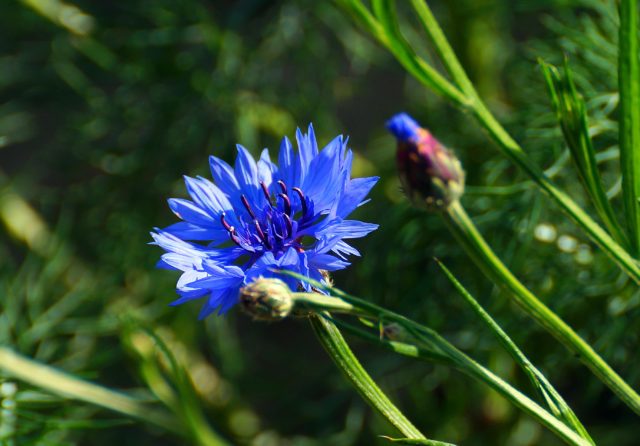
Where and when cornflowers grow
The birthplace of the cornflower is considered the southern part of Europe. Today, the plant lives in all areas with a temperate climate. It is most often found in South America, northern Africa and western Asia. On the territory of Russia, the plant grows almost everywhere. It inhabits roadsides, cereal fields and open glades. Cornflower is considered to be unpretentious and frost-resistant. In one place, the plant can maintain a lush flowering for about 10 years.
Types of cornflower
In nature, there are about 500 varieties of cornflower. Each of them differs in appearance, properties and habitat. In alternative medicine, field cornflower is most often used. The most common types of plants also include garden, oriental, meadow, mountain and white.
The chemical composition of cornflower
The cornflower herb has many medicinal properties. This is due to the rich composition. Thanks to him, the plant has a powerful anti-inflammatory and diuretic effect. It is often used to treat diseases of the liver and biliary tract. The cornflower contains the following substances:
- flavonoids;
- glycosides;
- pelargonin chloride;
- tannins;
- minerals (copper, potassium, iron, magnesium, calcium);
- alkaloids;
- pectins;
- vitamins C and A;
- anthocyanins;
- coumarins;
- resin.
Due to the content of a large amount of tannins, the plant has a beneficial effect on the work of digestion.Pectins increase their effectiveness. They speed up the absorption of food by stimulating peristalsis. Flavonoids in cornflower remove toxic substances from the body and slow down the development of inflammatory processes. This allows it to be used for the prevention of serious diseases.
The minerals contained in cornflower are responsible for the strength of the skeleton and teeth. Due to anthocyanins, the plant strengthens blood vessels and has a bactericidal effect. Alkaloids, in turn, relieve pain and prevent the development of cardiovascular disease. The coumarins in the plant act as anticoagulants and have antifungal effect.
What is useful and what diseases does cornflower treat
Cornflower is widely used in alternative medicine. It is famous for a number of beneficial properties. For medicinal purposes, blue petals are mainly used. They are distinguished by the content of hydrocyanic acid derivatives. Anthocyanins in the composition are equally important. It is they who give the plant petals a rich blue color. An antioxidant effect is produced on the human body.
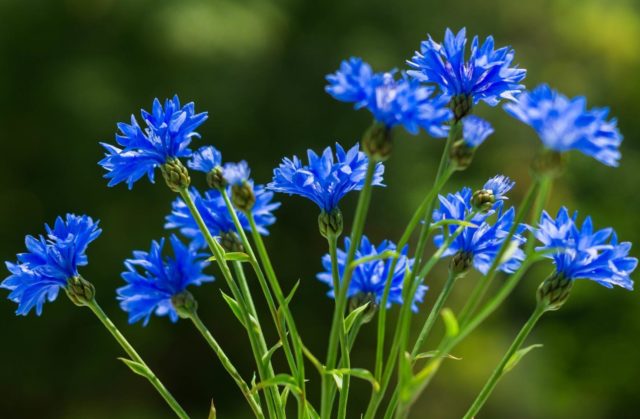
The healing properties of the field cornflower also include:
- antibacterial properties;
- strengthening the immune system;
- choleretic and diuretic effects;
- antipyretic effect;
- relief of pain syndrome;
- diaphoretic action;
- calming effect;
- elimination of edema.
Cornflower has the ability to stimulate the production of gastric juice. Therefore, the plant is often used to treat diseases of the gastrointestinal tract. Due to its diuretic effect, the plant is effective against ailments of the genitourinary system. Externally, cornflower is used for inflammation and irritation of the eyes. Women often use herbal decoction for infectious gynecological diseases and for the regulation of the menstrual cycle.
The beneficial substances in the composition of the plant have the ability to accelerate the regeneration processes. That is why they help to cope with skin diseases. The plant is also widely used in cosmetology. It gives the skin its elasticity and protects it from the harmful effects of the environment.
Useful properties of cornflower for men
Cornflower is also good for men's health. The tincture made from its petals is used to increase potency. It improves blood circulation and reduces inflammation in the prostate gland. As a result of the treatment, sex drive is increased and physical endurance is increased. The duration of the treatment course is at least 1 month. The beneficial properties of cornflower petals are also used for the prevention of cardiovascular diseases.
Cooking methods
In folk medicine, several methods of making medicinal products based on cornflower are practiced. It can be found in complex herbal preparations. The most common forms of medicine are cornflower tincture and decoction. It is often used in the form of an oil extract or tea.
Tincture
The medicinal properties of cornflower tincture are relevant for toothache and skin diseases. Compresses with tincture do an excellent job with limb swelling.
Components:
- 20 g flowers;
- 300 ml of vodka.
Cooking process:
- Dried inflorescences are placed in a glass bottle and filled with vodka.
- The medicine is infused in a dark place for 2 weeks.
- Filter the drink before use.
- The tincture should be drunk 20-30 drops 3-4 times a day. It is preliminarily bred in a small amount of water.
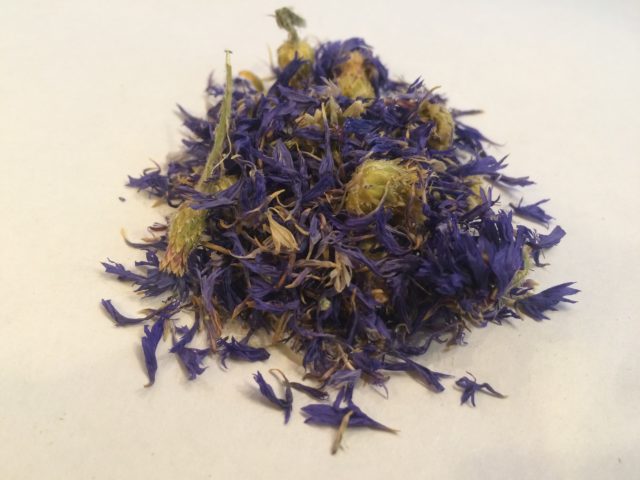
Infusion
The herbal infusion is often used as a choleretic and diuretic.In addition, it has powerful immunomodulatory effects. When taken as a preventive measure, it prevents the development of viral and infectious diseases.
Components:
- 1 tbsp. hot water;
- 5 g cornflower.
Cooking steps:
- Dried flowers are poured with hot water, after which the container is covered with a lid.
- The duration of the infusion of the remedy is 2 hours.
- The finished infusion is filtered and taken in 60 ml 3 times a day. Reception is carried out before meals.
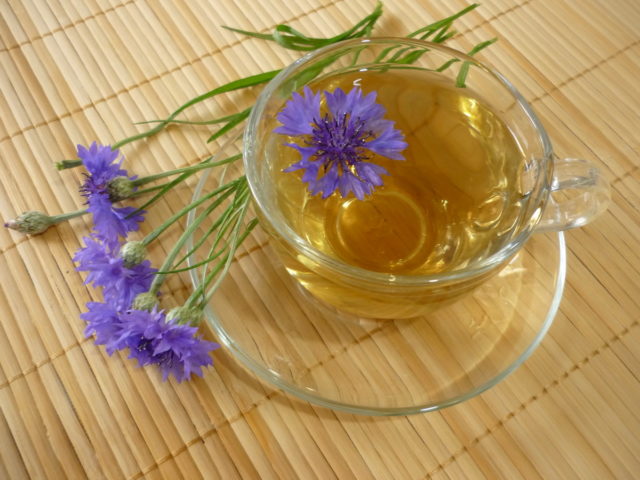
Decoction
Cornflower tea is considered a traditional remedy. It is used for angina and bronchitis. The broth quickly helps to cope with coughs and eliminate inflammation. It is used as a lotion for conjunctivitis and blepharitis.
Ingredients:
- 1 tsp cornflower petals;
- 30 g of honey;
- 250 ml of water.
Recipe:
- Raw materials are poured with water and put on fire.
- After boiling, the medicinal product is kept on low heat for at least 5 minutes.
- After removing from the stove, the broth is insisted under the lid for another hour.
- Filter it before use, and then add honey.
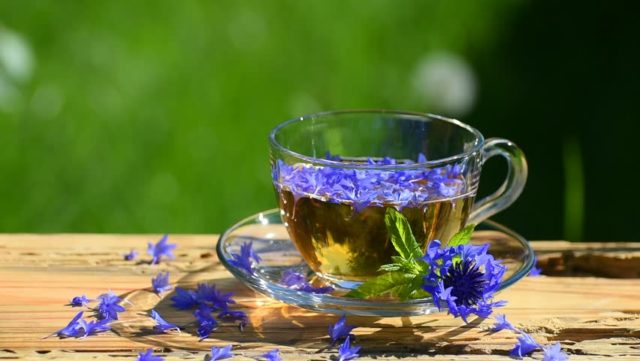
Tea
Cornflower tea is not only pleasant to the taste, but also very useful for the human body. It normalizes the water-salt balance and promotes the breakdown of fats. That is why the drink is often used for weight loss purposes.
Components:
- 1 tsp green tea;
- 2 tsp dried raw materials;
- 500 ml hot water.
Cooking steps:
- The ingredients are mixed and placed in a teapot. Then the mixture is poured with boiling water.
- The duration of the infusion of the drink is 5 minutes.
- You can add sugar or honey to it before serving.
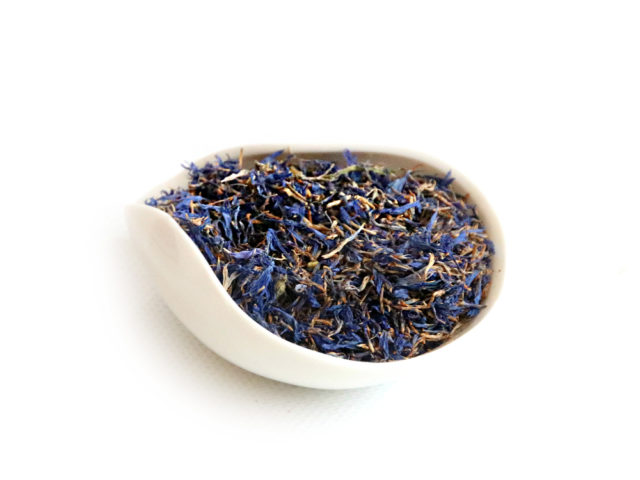
Oil
The oil is used to treat single skin rashes. It directs its action to the focus of inflammation. In some cases, it is used during massage.
Ingredients:
- 60 ml olive oil;
- 3 drops of vitamin E;
- 1 tbsp. l. cornflower petals.
Cooking process:
- Cornflower must be chopped with a blender or mortar.
- Oil and vitamin E are added to the resulting mass.
- Mix everything thoroughly.
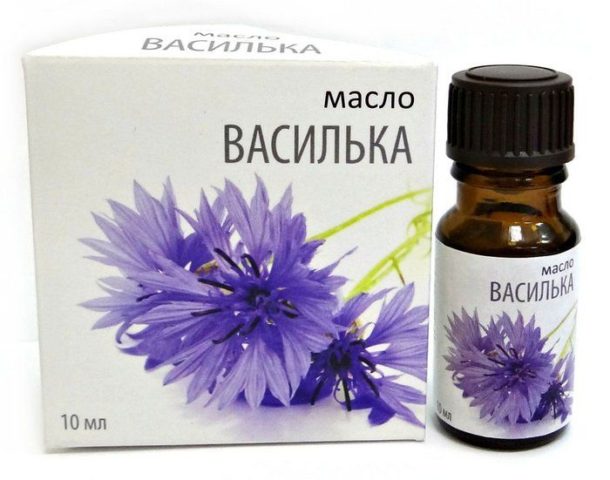
The use of cornflower in traditional medicine
The healing properties of the cornflower plant make it an irreplaceable remedy for folk therapy. It has a fairly wide spectrum of action. Very often the plant is combined with other medicinal herbs. It is used not only dried but also fresh.
To stop bleeding
To stop bleeding, the plant is used in conjunction with horsetail. The components are mixed in the same ratio and filled with hot water. Then they are boiled over low heat until the liquid evaporates by half. The drink is taken in 2 tbsp. l. each hour. To strengthen the therapeutic effect, the intake is continued for 2-3 days after the bleeding stops.
For constipation
Cornflower infusion prepared according to the classic recipe can also be used to relieve constipation. It is taken in 1 tbsp. l. 3-4 times a day. Reception is carried out 15-20 minutes before meals.
To relieve eye strain
Cornflower broth can be used to remove traces of fatigue from the eyes and strengthen blood vessels. A clean piece of gauze is soaked in it. It is applied to the eyes for 10-15 minutes. The compress helps to relieve puffiness and bags under the eyes. The procedure also improves vision and relieves inflammation.
With hypertension
With hypertension, take a multi-component decoction.It normalizes the level of blood pressure, thereby improving a person's well-being. To prepare it, the following ingredients are mixed in equal proportions:
- leaves of white mistletoe;
- valerian root;
- black chokeberry berries;
- cornflower;
- yarrow;
- field horsetail;
- hawthorn fruit.
Recipe:
- The resulting mixture is poured into 300 ml of hot water.
- The medicine is insisted for 30 minutes.
- Filter it before use. Drink 70 ml of the product after each meal.
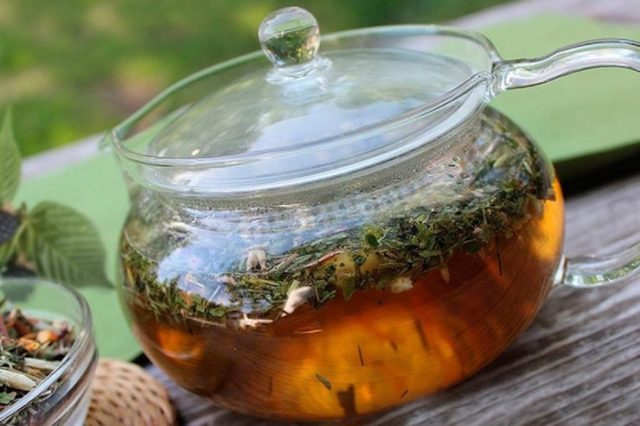
With a cold
Cornflower infusion is also effective when the first symptoms of a cold appear. It is recommended to take it in 1/3 tbsp. 3 times a day. The general course of treatment is 5-7 days. Reception of the infusion allows you to strengthen the immune system and protect the body from viruses.
In case of liver dysfunction
Thanks to its antioxidant properties, cornflower effectively cleanses liver cells. For these purposes, use a tincture. A single dosage is 30 drops. Reception is carried out 3 times a day 20 minutes before meals. The duration of treatment depends on how advanced the disease is.
Application in cosmetology
Cornflower extract can be found in many cosmetics. It reduces puffiness and has a rejuvenating effect. At home, anti-aging masks are prepared from it. They perfectly strengthen blood vessels and soothe irritated skin. Cornflower decoction acts as an effective tonic lotion. They are advised to wipe their skin before going to bed. The most valuable properties of cornflower in cosmetology include:
- disinfection of the skin;
- narrowing of pores;
- getting rid of dandruff;
- smoothing wrinkles;
- elimination of puffiness;
- removal of dark circles under the eyes.
Cooking applications
Cornflower petals, seeds and leaves are also used in cooking.
The seeds are ground to a powder and used as a seasoning. It gives the dish an interesting flavor. Cornflower petals are often added to soups and vegetable salads. When dried, they perfectly complement tea blends.
Contraindications
The beneficial properties of blue cornflower do not exclude the presence of contraindications. These include:
- individual intolerance;
- the period of lactation and bearing of the child;
- uterine bleeding;
- age under 12.
When using the plant for medicinal purposes, caution should be exercised in the elderly and those who are prone to allergic reactions. It is mildly toxic. The plant contains substances that can accumulate in the body. The possibility of combining cornflower with medications should be checked with the doctor on an individual basis.
Discontinue use if any side effects occur. The most common of these is an allergic reaction. It is accompanied by skin rash, dizziness, and itching.
Collection and procurement
The medicinal plant is harvested during the flowering period - from June to July. Tubular and marginal flowers are collected from the flower basket. Drying is carried out at a temperature of 40-50 ° C. The procedure is performed in the shade with free air access. In order for moisture to evaporate evenly, the raw material should be constantly turned over. The dried plant has no smell. The percentage of moisture content of the finished product should not exceed 14%. Dried cornflower is stored in glass jars with tight lids. The shelf life, if all conditions are met, is 2 years.
Conclusion
The medicinal properties of the herb cornflower make it an effective traditional medicine. The plant must be applied according to a given scheme. Only in this case will the result meet expectations.

